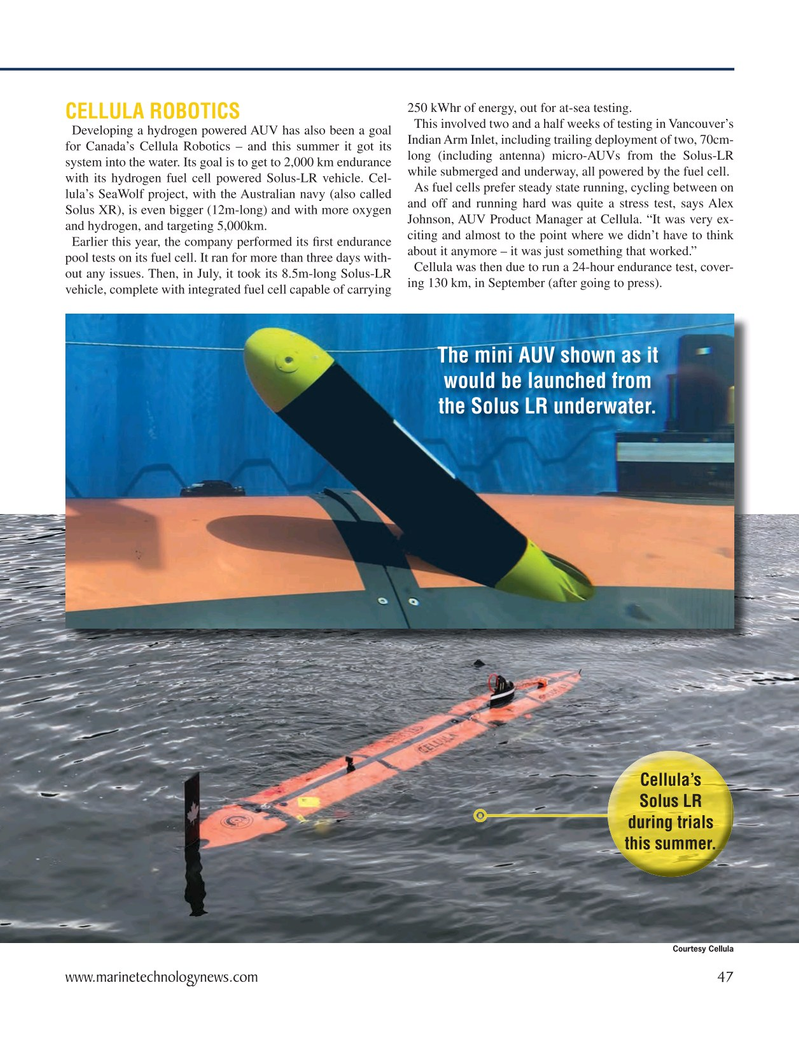
Page 47: of Marine Technology Magazine (September 2022)
Read this page in Pdf, Flash or Html5 edition of September 2022 Marine Technology Magazine
250 kWhr of energy, out for at-sea testing.
CELLULA ROBOTICS
This involved two and a half weeks of testing in Vancouver’s
Developing a hydrogen powered AUV has also been a goal for Canada’s Cellula Robotics – and this summer it got its Indian Arm Inlet, including trailing deployment of two, 70cm- long (including antenna) micro-AUVs from the Solus-LR system into the water. Its goal is to get to 2,000 km endurance while submerged and underway, all powered by the fuel cell. with its hydrogen fuel cell powered Solus-LR vehicle. Cel-
As fuel cells prefer steady state running, cycling between on lula’s SeaWolf project, with the Australian navy (also called and off and running hard was quite a stress test, says Alex
Solus XR), is even bigger (12m-long) and with more oxygen
Johnson, AUV Product Manager at Cellula. “It was very ex- and hydrogen, and targeting 5,000km.
citing and almost to the point where we didn’t have to think
Earlier this year, the company performed its ? rst endurance about it anymore – it was just something that worked.” pool tests on its fuel cell. It ran for more than three days with-
Cellula was then due to run a 24-hour endurance test, cover- out any issues. Then, in July, it took its 8.5m-long Solus-LR ing 130 km, in September (after going to press). vehicle, complete with integrated fuel cell capable of carrying
The mini AUV shown as it would be launched from the Solus LR underwater.
Cellula’s
Solus LR during trials this summer.
Courtesy Cellula www.marinetechnologynews.com 47
MTR #7 (34-49).indd 47 9/29/2022 9:23:44 AM

 46
46

 48
48
